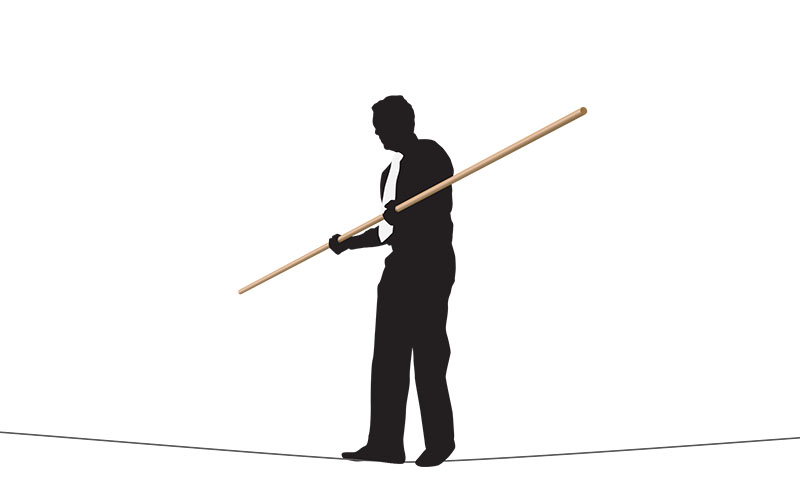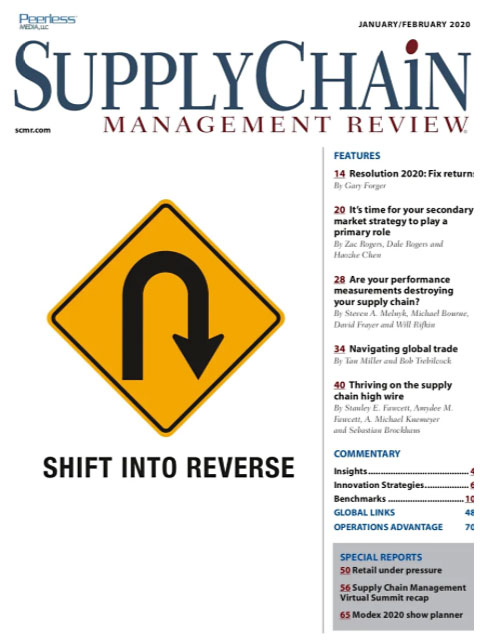Sorry, but your login has failed. Please recheck your login information and resubmit. If your subscription has expired, renew here.
January-February 2020
If the holidays at your household were like most, the gifts were chosen and wrapped with care, and then half were returned in the week after Christmas. Maybe more than half. After all, who among us hasn’t bought four shirts in a variety of sizes and colors with the intent of keeping one and returning three. And why not: Retailers and e-tailers alike have made returns seamless, easy and cheap. At least for the shopper. For the supply chains of the retailer, manufacturer or brand owner, returns are a once-neglected area that is growing into a major focus of supply chain managers who don’t want to see their organizations lose their shirt taking… Browse this issue archive.Need Help? Contact customer service 847-559-7581 More options
On May 21, 2017, the Big Top came down and the Ringling Bros. and Barnum & Bailey Circus performed its final show in, where else, New York’s Nassau Coliseum. After a 146-year run, the curtain closed on “The Greatest Show on Earth.” That said, it’s time for a one-question pop quiz that focuses on a critical supply chain capability that you need if you want to help your company avoid Ringling’s fate. Here’s the question: Why did “The Greatest Show on Earth” go out of business?
Perhaps you’re thinking: “The circus is a relic of the 20th Century. It’s amazing that Ringling survived as long as it did.” If so, you’ve overlooked Cirque du Soleil, a smashingly successful 21st Century circus. Every year, close to 20 million people pay upwards of $100 per ticket to experience Cirque performers in action.
The diverging fates of Ringling and Cirque highlight one of the great mysteries in business: “How do one-time showstoppers lose their balance on the competitive high wire?” The mystery is solved in two words:
- Choreography. Choreography, the art and science of making meaning through space and movement, brought the famed three rings together, creating the circus.
- Competency. Although both Cirque and Ringling were born of choreography, Cirque thrives because it invests in choreography as a valued competence. The Ringling Bros. died because it didn’t.

This complete article is available to subscribers only.
Log in now for full access or start your PLUS+ subscription for instant access.
SC
MR
Sorry, but your login has failed. Please recheck your login information and resubmit. If your subscription has expired, renew here.
January-February 2020
If the holidays at your household were like most, the gifts were chosen and wrapped with care, and then half were returned in the week after Christmas. Maybe more than half. After all, who among us hasn’t bought… Browse this issue archive. Access your online digital edition. Download a PDF file of the January-February 2020 issue.On May 21, 2017, the Big Top came down and the Ringling Bros. and Barnum & Bailey Circus performed its final show in, where else, New York's Nassau Coliseum. After a 146-year run, the curtain closed on “The Greatest Show on Earth.” That said, it's time for a one-question pop quiz that focuses on a critical supply chain capability that you need if you want to help your company avoid Ringling's fate. Here's the question: Why did “The Greatest Show on Earth” go out of business?
Perhaps you're thinking: “The circus is a relic of the 20th Century. It's amazing that Ringling survived as long as it did.” If so, you've overlooked Cirque du Soleil, a smashingly successful 21st Century circus. Every year, close to 20 million people pay upwards of $100 per ticket to experience Cirque performers in action.
The diverging fates of Ringling and Cirque highlight one of the great mysteries in business: “How do one-time showstoppers lose their balance on the competitive high wire?” The mystery is solved in two words:
- Choreography. Choreography, the art and science of making meaning through space and movement, brought the famed three rings together, creating the circus.
- Competency. Although both Cirque and Ringling were born of choreography, Cirque thrives because it invests in choreography as a valued competence. The Ringling Bros. died because it didn't.
SC
MR


Latest Supply Chain News
Latest Podcast

 Explore
Explore
Business Management News
- Strengthening customer fulfillment: Building a strategic stakeholder network
- The hard job of teaching soft skills
- Trump picks former Wisconsin congressman Sean Duffy for DOT secretary
- Made in Mexico, manufactured by China
- Retail sales see gains in October, reports Commerce and NRF
- Balancing green and speed: Home delivery insights from the pandemic era
- More Business Management
Latest Business Management Resources

Subscribe

Supply Chain Management Review delivers the best industry content.

Editors’ Picks





